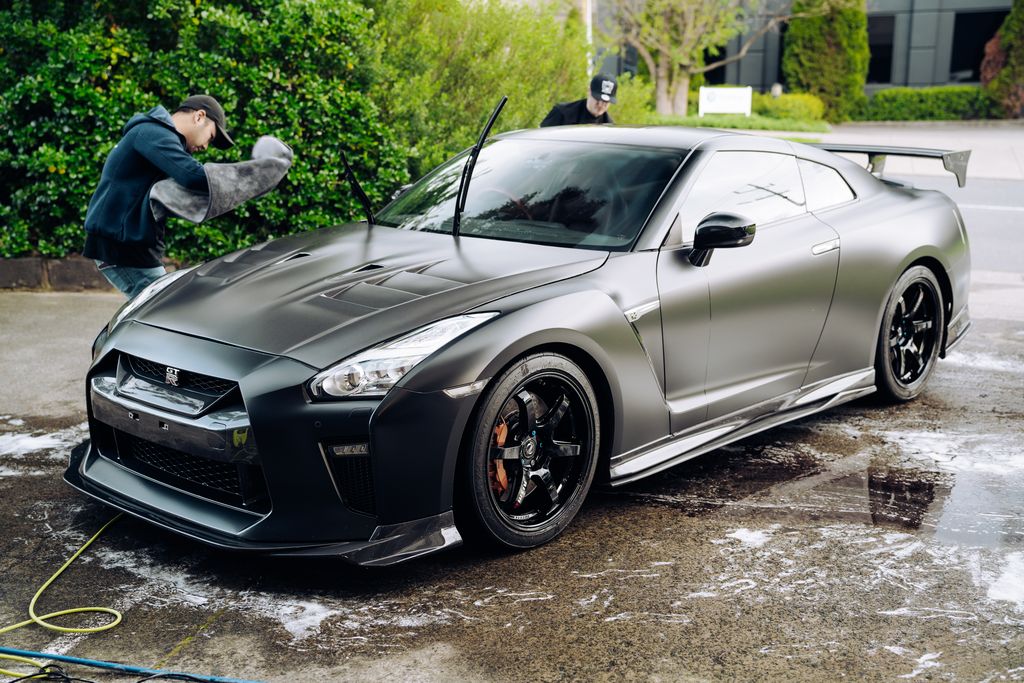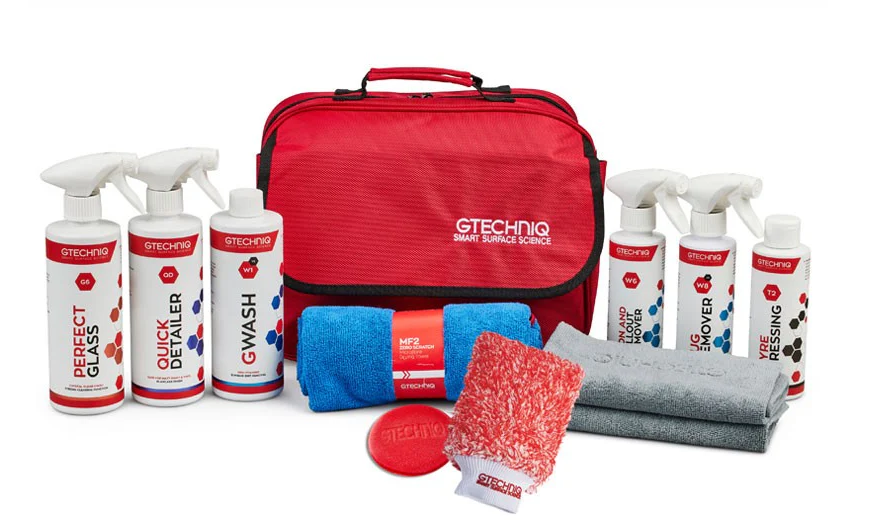Investing in a new car is a big thing, and one of the best ways to protect that investment is through regular detailing.
Detailing includes the cleaning, polishing, and protecting of both the interior and exterior of your vehicle. It is not just about making your car look shiny and new, but also about preserving its value and extending its lifespan.
This comprehensive guide is tailored to help new car owners, auto enthusiasts, and first-time car buyers in maintaining the pristine condition of their vehicles.
Should You Detail Your New Car?

It’s new, it’s pristine, does it really need detailing? In our humble opinion, yes.
Detailing may seem like an unnecessary expense, but it’s actually a wise investment for several reasons:
- Protects the paint and finish from environmental elements such as UV rays, bird droppings, and tree sap
- Prevents rust and corrosion by removing dirt and grime that can cause damage over time
- Enhances the overall appearance of the car, making it look newer and more attractive
- Helps retain the resale value of the vehicle by keeping it in top condition
Now that we’ve established the importance of detailing, let’s dive into some tips and tricks for taking care of your new car.
Setting Up Your Detailing Workspace
Gathering Necessary Supplies
The right tools make all the difference. You’ll need a range of products such as wash mitts, microfibre towels, buckets, cleaners, waxes, and more. Invest in high-quality items that are safe for your car’s paint and durable for multiple uses.
List of essentials:
- Two large buckets (one for soapy water, one for rinsing)
- Grit guards to prevent debris in rinse water
- pH-balanced car shampoo
- Wheel cleaner
- All-purpose cleaner for interior
- Quality microfibre towels
- Soft-bristled brush for wheels
- Detailing clay with lubricant
- Paint sealant or wax
- Vacuum cleaner
- Brush set for interior surfaces
Preparing the Area
Choose a shady spot to detail your car, as direct sunlight can cause products to dry out too quickly and leave residue.
Clear the area of any obstacles to avoid potential accidents, and ensure that all your tools and products are within reach.
Remember to have a reliable source of water nearby, and if detailing indoors, set up proper ventilation.
Interior First
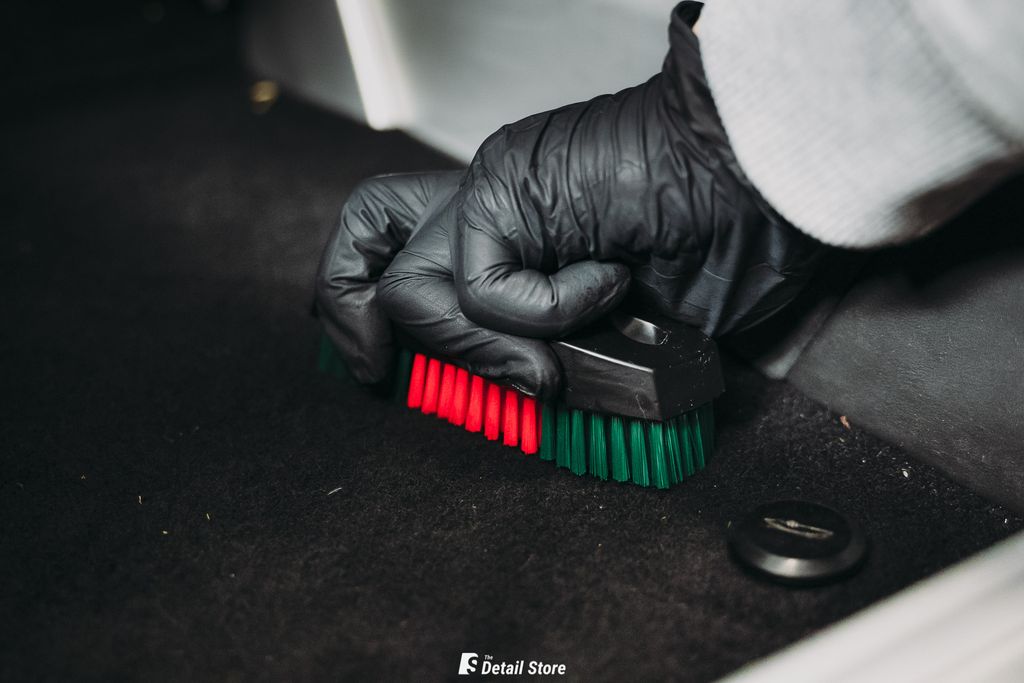
Begin with the interior, as the frequent entering and exiting during the detailing process can soil the exterior.
Start by thoroughly cleaning the inside of your car, and once it’s spotless, secure the doors and windows. Then, shift your focus to the exterior.
Your car’s interior deserves as much love as the exterior.
Deep Cleaning Interior Surfaces
Different materials require different cleaning approaches:
- Plastics and vinyl can be wiped down with an all-purpose cleaner and a microfibre towel.
- Leather should be cleaned and conditioned with specialised products to prevent drying and cracking.
- Fabrics and carpets can benefit from a thorough vacuuming and spot treatment with a fabric-specific cleaner. Use brushes to get trapped dirt out of hard to reach spots.
Interior Protection
Keep your interior looking and smelling factory-fresh with protectants:
- Use a UV protectant on dashboards, door panels, and plastics to prevent sun damage.
- Apply a leather conditioner to keep seats supple and resistant to wear.
- For carpets and upholstery, consider using a fabric guard to repel spills and stains.
Cleaning Glass
Achieving streak-free windows:
- Spray with a glass cleaner and wipe in a vertical motion on the outside and a horizontal motion on the inside to easily spot any streaks.
- Inspect your work from different angles to ensure thorough cleaning.
Trim Protection
Rubber, vinyl, and plastic trims can fade over time. To combat this:
- Use dedicated trim cleaners to remove built-up grime.
- Apply trim restorers or protectants to maintain their appearance and protect against UV damage.
Washing the Exterior
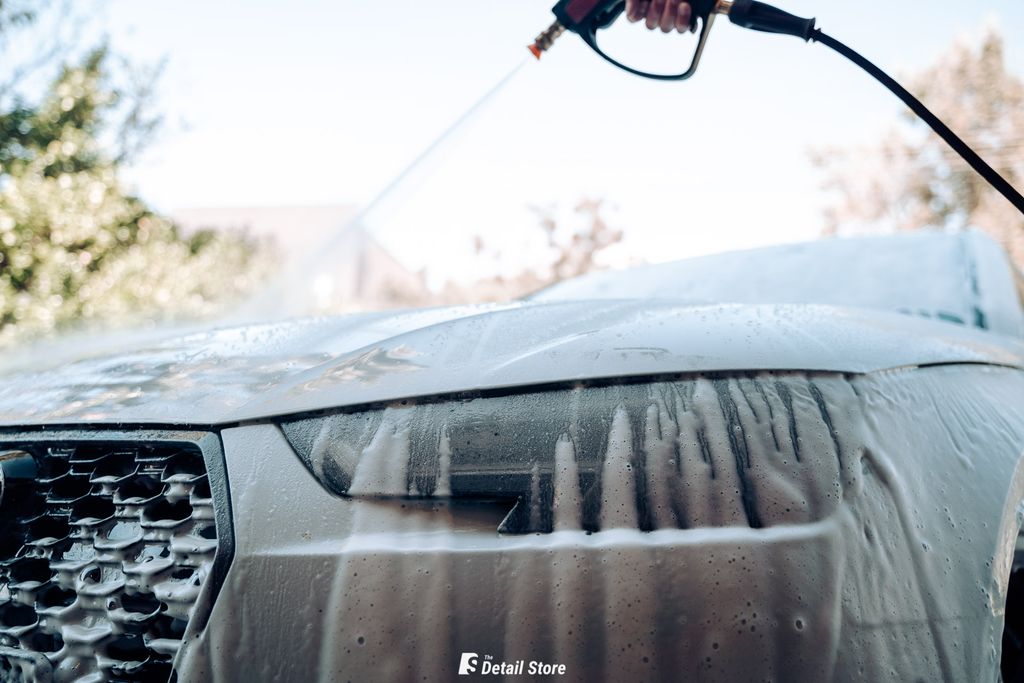
Pre-Wash
Pre-washing, also known as ‘snow foam’ or ‘touchless washing’, uses a specialised product to break down dirt. This minimises the amount of physical contact necessary with the paint, reducing scratching and swirl marks.
- Apply the pre-wash product using a foam gun or sprayer. Allow it to sit for a few minutes to dissolve the dirt and grime.
- Rinse it off using a garden hose or pressure washer. Start from the wheels and tires first to avoid soiling already cleaned areas.
Hand Washing
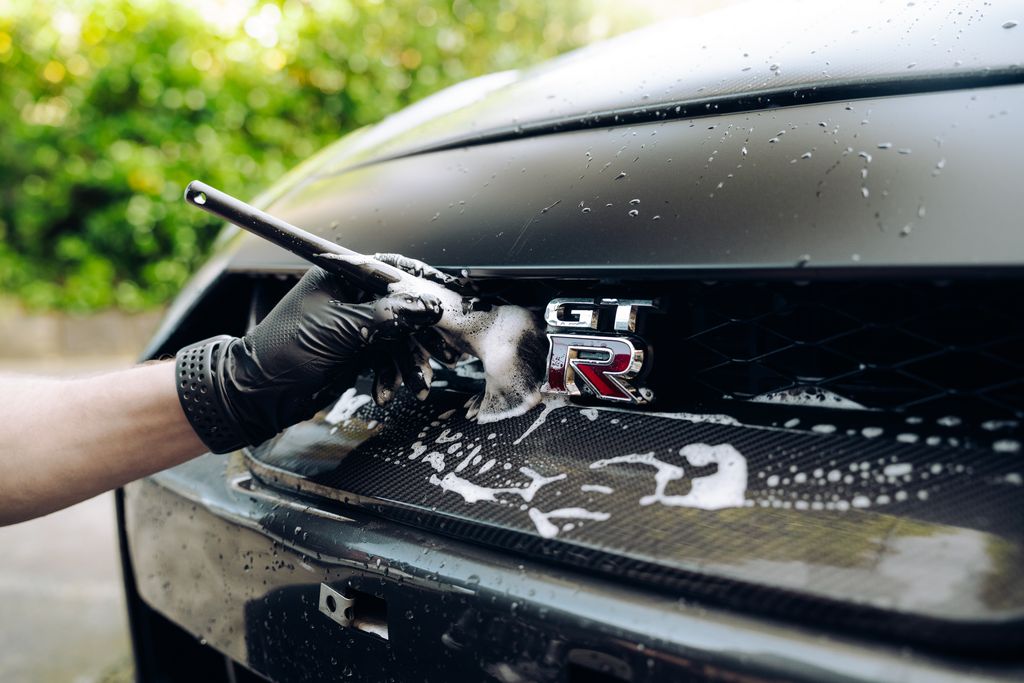
Hand washing is the gold standard for cleaning your car’s exterior. Always use a high-quality car shampoo to maintain the finish.
Order of washing:
- Start with the roof and work your way down to the lower panels.
- Always wash in straight lines and use two buckets to minimise the chances of swirl marks.
- Rinse frequently to wash away dirt and suds.
Drying Techniques
After washing, dry your car with a clean and dry microfibre towel to prevent water spots.
- Fold the towel into quarters and use a patting motion rather than rubbing.
- Work from the top down, and flip or change the towel as it becomes saturated.
Paint Decontamination and Protection
Maintaining a smooth and clean car surface is essential for a deep shine and to make your reflections crisp.
Using Detailing Clay
Detailing clay is designed to remove bonded surface contaminants such as industrial fallout, rail dust, and brake dust.
- Lubricate the surface with a quick detailer spray or car wash soap.
- Glide the clay bar back and forth, using light pressure. You should feel and hear the contaminants releasing from the paint.
- Check the clay frequently and knead it to expose a clean surface.
Choosing and Applying Protection

Protecting your vehicle keeps it looking new and provides a barrier against environmental damage.
- Choose between waxes, sealants, and ceramic coatings, depending on the level of protection and durability you need.
- Apply using a foam applicator or polishing machine, working one panel at a time in a back-and-forth and up-and-down motion.
- Buff off with a clean, dry microfibre towel for a glossy finish.
Maintaining Your New Car’s Aesthetics
Detailing is not a one-time job. Regular maintenance is necessary to preserve your car’s newness.
Routine Detailing Schedule
To preserve your new car’s appearance:
- Weekly washing to remove dirt and contaminants.
- Bi-monthly waxing or sealing for added protection (if your car isn’t ceramic coated).
- Quarterly interior deep cleaning for a fresh look and feel.
Quick Maintenance Tips
- Keep a microfibre cloth in your car and dust the interior regularly to prevent the build-up of dust and grime.
- Address spills and stains as soon as possible to prevent them from setting and becoming more difficult to clean later.
Conclusion
Detailing a new car is not just about making it look good; it’s about protecting your investment and maintaining its value.
With the right approach, you can keep your car looking new for years to come.
Remember, regular maintenance and attention to detail are the keys to a long-lasting shine.
Frequently Asked Questions (FAQs)
Can I use household cleaning products to detail my car?
It’s best to avoid household cleaners, as they can be too harsh and damage your car’s paint. Always use products designed specifically for automotive use.
Is it safe to use a pressure washer on my car?
Yes, a pressure washer can be used, but it’s important to use the correct nozzle and pressure settings to avoid damaging the paint or forcing water into sensitive areas. If you’re unsure, start with the gentlest setting and move closer to the car until you find the right balance of effectiveness and safety.
How often should I detail my new car?
Ideally, aim for a full detailing session every three to six months. However, regular washing should be done weekly or bi-weekly, and waxing or applying sealant every three months to maintain protection and shine.
What’s the first step I should take when detailing my new car?
Begin with the interior to avoid re-contaminating the exterior during the detailing process. Start by thoroughly cleaning and protecting the interior surfaces, then move on to washing and detailing the exterior.
Can ceramic coatings be applied immediately to a new car?
Yes, applying a ceramic coating to a new car is beneficial as it helps protect the pristine paintwork from environmental elements and makes maintenance easier. Ensure the vehicle is thoroughly washed and decontaminated before application.
To begin, ensure that you inspect the car surface carefully and are genuinely happy with the condition of the paint. The truth is, not all newly delivered cars come with flawless paint and more often than not, some mild paint correction is necessary.
What are the benefits of using a clay bar on my new car?
Using a clay bar removes embedded contaminants like tar, sap, and metal particles from your paintwork that regular washing can’t remove. This process ensures a smooth surface, which is crucial for applying waxes, sealants, or ceramic coatings effectively.
Is it necessary to use two buckets when washing my car?
Yes, using two buckets—one for your cleaning solution and one for rinsing your mitt—helps avoid transferring dirt and grime back onto your car’s surface, reducing the risk of scratches.
How do I choose the right protective product for my car’s exterior?
Choose based on durability, desired finish, and maintenance level. Waxes offer a warm glow but require frequent reapplication, sealants provide longer-lasting protection with less gloss, and ceramic coatings offer the longest-lasting protection with a high gloss finish.
What should I do if my new car gets a scratch?
If the scratch is superficial, it can often be treated with light polishing by hand or machine at home. For deeper scratches, it might be necessary to visit a professional for paint correction or touch-up painting.
How can I maintain the shine after detailing my car?
Regular maintenance is key. Wash your car regularly to remove contaminants before they bond to the surface, and apply a quick detailer or spray wax between full waxings to maintain the shine and protective layer.
-

Aaron is a passionate car detailing enthusiast who channels his expertise and love for pristine vehicles into engaging blog content for a leading detail store website. With a keen eye for detail and a wealth of knowledge about the latest products and techniques, Aaron provides invaluable insights and tips to fellow car enthusiasts. His dedication to achieving showroom-quality results and his ability to explain complex processes in an easy-to-understand manner make his blog a go-to resource for anyone looking to elevate their car detailing game.
-

Calvin brings a wealth of experience across multiple engineering disciplines, including chemical, mechanical, and electrical engineering. His in-depth knowledge of filtration systems and hydraulic pumps has positioned him as an expert in the pressure washer product category. With a unique combination of technical expertise and business insight, Calvin excels at solving complex challenges and driving innovation, particularly in the car detailing industry.

